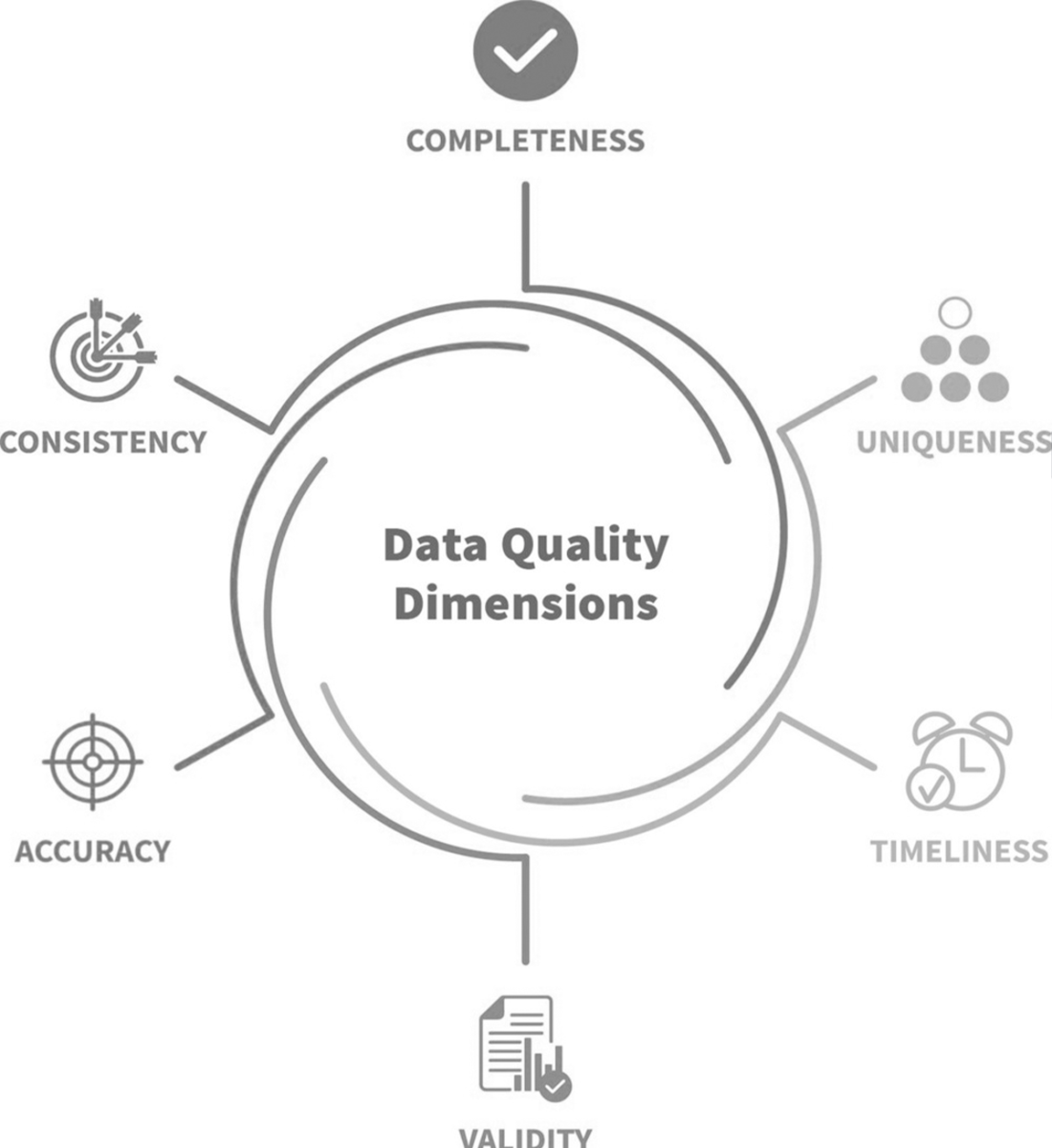
JanusGraph with Cassandra
16 December 2023
Data Engineering in Snowflake
16 December 2023
Tags

Published by
BluePi
Data-Driven Business Transformation
Data Quality in Snowflake
In this blog, we will explore how to maintain data quality in Snowflake. We will discuss best practices for ensuring data integrity, such as implementing data governance policies and using data quality tools and techniques.
We will also delve into the various features and capabilities of Snowflake that can help with data quality, its support for data cleansing and enrichment, and its integrations with other data quality solutions.
By the end of this blog, you will have a better understanding of how to maintain data quality in Snowflake and how to leverage the platform’s features and capabilities to ensure the integrity of your data.
Data Quality Dimensions
There are several dimensions that are commonly used to evaluate the quality of data. These dimensions can help organizations identify and address any issues or deficiencies in their data, and ensure that it is accurate, complete, and reliable.

Some of the most common dimensions of data quality include:
- Accuracy: This refers to the degree to which data is free from errors and mistakes. Data that is accurate is reliable and trustworthy and can be used to make informed decisions.
- Completeness: This refers to the extent to which data is complete and includes all necessary information. Missing or incomplete data can lead to inaccurate insights and flawed decision-making.
- Consistency: This refers to the degree to which data is consistent and conforms to established rules and standards. Inconsistent data can cause confusion and hinder effective analysis and decision-making.
- Timeliness: This refers to the currency and relevance of the data. Data that is timely is up-to-date and current and can be used to make timely decisions.
- Validity: This refers to the degree to which data conforms to specified criteria and meets the requirements of its intended use. Invalid data is not fit for its intended purpose and cannot be used effectively.
- Integrity: This indicates that the attributes are maintained correctly, even as data gets stored and used in diverse systems.
By addressing these dimensions of data quality, organizations can ensure that their data is reliable and can be used effectively to drive business growth and success.
Why it is important?
Inadequate data quality causes data teams to waste time fixing malfunctioning dashboards and suspect reports. Business leaders turn back to making decisions based on intuition and anecdotal evidence as organisational faith in data plummets.
It’s a sad fact, but there are a lot of different ways that data quality can be lost. Downstream data products may become corrupted by schema modifications. Important data can stop flowing into your warehouse because of APIs.Data can be outdated or redundant. And when something goes wrong, data teams might not be aware of it until a panicked email or Slack message asking why a crucial report or tool isn’t working as intended arrives.
The good news is that Snowflake offers a number of practical capabilities that, when implemented properly and regularly, can aid in enhancing data quality.
Data quality is important for a number of reasons. High-quality data is essential for informed decision-making, as it allows organizations to have confidence in the accuracy and reliability of the information they are using.
Poor data quality can have significant consequences, including:
- Inaccurate insights and flawed decision-making: Poor-quality data can lead to incorrect conclusions and decisions, which can have negative impacts on the business.
- Decreased efficiency Poor-quality data can lead to wasted time and resources as employees spend time fixing errors and inconsistencies.
- Decreased customer satisfaction: Poor-quality data can lead to incorrect or incomplete customer information, which can result in a negative customer experience.
- Decreased competitive advantage: Poor-quality data can hinder an organization’s ability to analyze and understand its market and industry, leading to a loss of competitive advantage.
By ensuring data quality, organizations can avoid these negative consequences and maintain a competitive edge. High-quality data is essential for driving business growth and success.
Snowflake Data Quality Features
Access History
Data audits are a crucial part of assuring data quality as well as that your data is being kept, accessed, and used securely and in accordance with all legal and regulatory standards.
You can find data quality problems like outdated data, data that deviate from intended distribution ranges, incomplete tables, and schema changes by assessing and documenting the condition of your data within Snowflake.
With Snowflake’s Access History function, you can learn important details about which tables are used, by whom, and how frequently.
Each row in the Access History view includes a single record for each SQL statement that identifies the columns the query accessed, together with the underlying tables from which the data for the query was retrieved.
Data Quality Queries
To identify specific quality problems, teams might set up data testing within their processes.
Simple data testing techniques, such as schema tests or custom tests, let you verify your data assumptions, confirm your code is functioning properly in well-known scenarios, and stop regressions when your code changes.
Testing data in Snowflake and beyond may be done using programmes like dbt and Great Expectations. The following are a few of the most popular data quality tests:
- Null values: Are any values unknown (NULL) where they shouldn’t be?
- Volume: Did your data arrive? And if so, did you receive too much or too little?
- Distribution: Are numeric values within the expected/required range?
- Uniqueness: Are any duplicate values in your unique ID fields
- Known invariants: Is profit always the difference between revenue and cost?
Object Tagging
Data engineers and governance experts can track sensitive data for compliance, discovery, protection, and asset utilization thanks to object tagging.
You can create key-value pairs for tags that represent data classification or sensitivity using object tagging.
Accurate object tagging makes it much simpler for governance teams to apply extra security measures like dynamic data masking or row-level access limits. It also makes it much easier to detect and monitor higher-risk data.
We should begin with object tags by creating a separate framework with a set of tags and acceptable values. We should consistently tag objects at the lowest level possible (account, database, schema, table, or column) so that masking and row-level access policies can be applied only to the data that requires it.
Snowsight
Data quality is more than just accuracy; it is also about adding value to the business. As a result, high-quality data must also be accessible, understandable, and discoverable.
You can use Snowsight, the platform’s visual, metadata-driven analytics interface, to improve data discovery for Snowflake assets.
Snowsight provides metadata information for any query result, such as filled/empty metres, frequency distributions, key distributions, and histograms, to your team. By filtering to specific subsets of data or applying contextual filters within the UI, you can delve deeper into these metadata-based contextual statistics.
Snowsight also offers data visualizations to help provide more context and additional ways of understanding and sharing insights with the rest of the organization.
These features, when combined, enable more robust discovery and exploration of your data assets within Snowflake.
Summary
In the era of data-driven digital transformation, it has become crucial for businesses to rely on accurate and reliable data. As a digital transformation service provider, Bluepi understands the importance of data quality in achieving digital transformation goals. We are one of the best consulting firms for digital transformation and a leading Snowflake services provider in India. Our Snowflake services and solutions cover Snowpark services in India, Data Lake in Snowflake, Data Warehousing in Snowflake, Data Analytics in Snowflake, and Data Engineering with Snowflake.
At Bluepi, we ensure that your data is of the highest quality, allowing you to make informed decisions and transform your business digitally. With our expertise and experience, we provide the best digital transformation services and solutions, enabling businesses to achieve their desired outcomes. So, if you’re looking for a digital transformation consulting company that can help you achieve your business goals, look no further than Bluepi.
About the Author

Published by
BluePi
Data-Driven Business Transformation

































